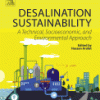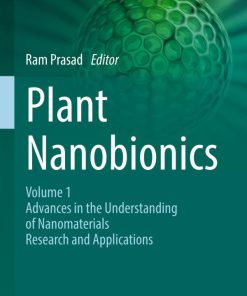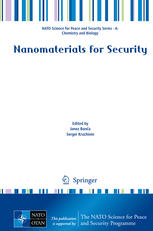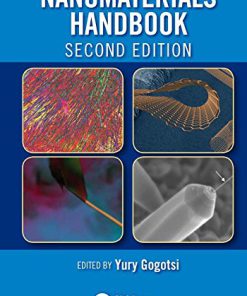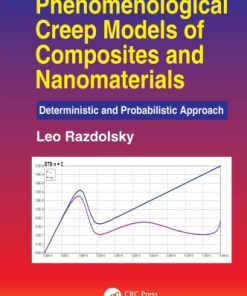Understanding Nanomaterials 1st edition by Malkiat Johal, Lewis Johnson 081535438X 9780815354383
$50.00 Original price was: $50.00.$25.00Current price is: $25.00.
Understanding Nanomaterials 1st edition by Malkiat S. Johal, Lewis E. Johnson – Ebook PDF Instant Download/DeliveryISBN: 081535438X, 9780815354383
Full download Understanding Nanomaterials 1st edition after payment.
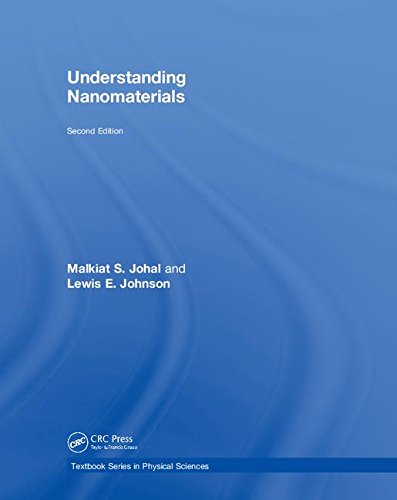
Product details:
ISBN-10 : 081535438X
ISBN-13 : 9780815354383
Author: Malkiat S. Johal, Lewis E. Johnson
Praise for the first edition “clear and informative” ―Chemistry World The authors provide the perfect training tool for the workforce in nanotech development by presenting the fundamental principles that govern the fabrication, characterization, and application of nanomaterials. This edition represents a complete overhaul, giving a much more complete, self-contained introduction. As before, the text avoids excessive mathematical detail and is written in an easy to follow, appealing style suitable for anyone, regardless of background in physics, chemistry, engineering, or biology. The organization has been revised to include fundamental physical chemistry and physics pertaining to relevant electrical, mechanical, and optical material properties. Incorporates new and expanded content on hard materials, semiconductors for nanoelectronics, and nonlinear optical materials. Adds many more worked examples and end-of-chapter problems. Provides more complete coverage of fundamentals including relevant aspects of thermodynamics, kinetics, quantum mechanics, and solid-state physics, and also significantly expands treatment of solid-phase systems. Malkiat S. Johal is a professor of physical chemistry at Pomona College, and earned his doctorate in physical chemistry at the University of Cambridge, UK. Lewis E. Johnson is a research scientist at the University of Washington, where he also earned his doctorate in chemistry and nanotechnology.
Understanding Nanomaterials 1st Table of contents:
Chapter 1 A Brief Introduction to Nanoscience
1.1 The Scope of Nanoscience
1.2 The Need for Nanoscience Education
1.3 The Nanoscale Dimension
1.4 Dimensionality and its Implications
1.5 Self-Assembly
1.6 Supramolecular Science
1.7 Overview of the text
1.8 Sources of Information on Nanoscience
End of chapter questions
Chapter 2 Thermodynamics and Nanoscience
Overview
2.1 Terminology in Thermodynamics
2.1.1 The system and surroundings
2.1.2 Some thermodynamic variables
2.1.3 Reversible and irreversible changes
2.2 Temperature and Nanomaterials
2.2.1 Thermodynamics and size effects
2.2.2 Melting temperatures of nanomaterials
2.3 The First Law of Thermodynamics
2.3.1 Work
2.3.2 Heat exchange and heat capacity
2.3.3 The first law in terms of work and heat
2.3.4 Enthalpy
2.4 The Entropy State Function: The Second and Third Laws
2.4.1 The classical interpretation of entropy
2.4.2 The statistical interpretation of entropy
2.5 The Gibbs Energy State Function
2.5.1 The direction of spontaneous change
2.5.2 The Gibbs energy and surface tension
2.5.3 Multicomponent systems and chemical potential
2.6 Physical and Chemical Equilibria
2.6.1 The equilibrium constant
2.6.2 Heterogeneous equilibria
2.6.3 The relationship between Gibbs energy and the equilibrium constant
2.6.4 Temperature dependence of the equilibrium constant
2.6.5 Phase equilibria in bulk materials
2.6.6 Phase equilibria in nanoparticles
End of chapter questions
Cited references
References and recommended reading
Chapter 3 Kinetics and Transport in Nanoscience
Overview
3.1 Rates of Chemical Reactions
3.1.1 The Rate of Reaction
3.1.2 Rate laws and reaction orders
3.1.3 A note on reversible reactions
3.1.4 Integrated rate laws
3.2 Theoretical Models for Reaction Rates
3.2.1 Temperature dependence of the rate constant
3.2.2 Collision theory
3.2.3 Catalysis
3.3 Modeling Simple Mechanisms
3.4 Bimolecular Binding Kinetics
3.4.1 Kinetics of reversible binding
3.4.2 The Scatchard and Hill equations: Cooperativity of binding
3.5 Solution Kinetics and Diffusion Control
3.5.1 Some basic physics of diffusion of nanomaterials in solution
3.5.2 Kinetics of diffusion control
End of chapter questions
References and recommended reading
Chapter 4 Quantum Effects at the Nanoscale
4.1 Quantum Confinement in Nanomaterials
4.2 Basic Introduction to Quantum Mechanics
4.2.1 Electromagnetic radiation
4.2.2 Matter waves and the uncertainty principle
4.2.3 Bound systems and quantization
4.2.4 The wavefunction
4.2.5 The Schrödinger equation
4.3 Confinement of Electrons in Boxes
4.3.1 The one-dimensional model
4.3.2 The two- and three-dimensional models and the concept of degeneracy
4.4 Nanoscale Confinement on Rings and Spheres
4.4.1 The particle on a ring model
4.4.2 The particle in a sphere model
4.5 Quantization of Vibration and Rotation
4.5.1 Quantization of vibrational motion: The harmonic oscillator
4.5.2 Quantization of rotational motion: The rigid rotator
4.6 Quantum Mechanical Tunneling
4.6.1 Implications of finite energy barriers
4.6.2 Implications for the quantum mechanical harmonic oscillator
4.7 Summary
End of chapter questions
References and recommended reading
Chapter 5 Intermolecular Interactions and Self-Assembly
Chapter Overview
5.1 Intermolecular Forces and Self-Assembly
5.1.1 Ion–ion interactions
5.1.2 Ion–dipole interactions
5.1.3 Dipole–dipole interactions
5.1.4 Interactions involving induced dipoles
5.1.5 Dielectric screening
5.1.6 Dispersion forces
5.1.7 Overlap repulsion
5.1.8 Total intermolecular potentials
5.1.9 Hydrogen bonds
5.1.10 The hydrophobic effect
5.2 Electrostatic Forces between Surfaces: The Electrical Double Layer
5.2.1 The electrical double layer
5.2.2 The Debye length
5.2.3 Interactions between charged surfaces in a liquid
5.3 Intermolecular Forces and Aggregation
5.4 Simple Models Describing Electronic Structure
5.4.1 Applications of the particle-in-a-box model
5.4.2 Conjugation in organic molecules
5.4.3 Solvatochromism
5.4.4 Aggregation and electronic structure
5.4.5 π–π stacking interactions
End of chapter questions
References and recommended reading
Chapter 6 Bulk Characterization Techniques for Nanomaterials
Chapter Overview
6.1 Spectroscopic Methods
6.1.1 Interactions between light and matter
6.1.2 UV–visible spectroscopy
6.1.2.1 Principles of UV–visible spectroscopy
6.1.2.2 Setup of a UV–visible spectrophotometer
6.1.3 The absorption of visible light by a nanofilm
6.1.4 Molecular fluorescence spectroscopy
6.1.4.1 Principles of fluorescence and fluorescence quantum yield
6.1.4.2 Setup of a fluorometer for bulk phase and thin-film fluorescence measurements
6.1.5 Vibrational spectroscopy methods
6.1.5.1 Introduction to vibrational modes
6.2 Light Scattering Methods
6.2.1 Scattering and absorption
6.2.2 Rayleigh and Raman scattering
6.2.3 Raman spectroscopy
6.2.4 Light scattering by nanoparticles
6.2.5 Determining particle size using scattered light
6.2.6 Dynamic light scattering
6.3 X-Ray Spectroscopy
6.3.1 Absorption
6.3.2 Fluorescence
6.3.3 Diffraction
End of chapter questions
References and recommended reading
Chapter 7 Fundamentals of Surface Nanoscience
Chapter Overview
7.1 Fundamentals of Surface Science
7.1.1 Surface energy of solids and liquids
7.1.2 Surface free energy of adsorbed monolayers
7.1.3 Contact angles and wetting phenomena
7.1.4 Nanomaterials and superhydrophobic surfaces
7.2 Adsorption Phenomena: Self-Assembled Monolayers
7.2.1 Simple adsorption isotherms
7.2.2 Other useful adsorption isotherms
7.3 Surfactant Chemistry
7.3.1 Micelle and microemulsion formation
7.3.2 The determination of surface excess: The CMC and the cross-sectional area per molecule
End of chapter questions
References and recommended reading
Chapter 8 Surface Characterization and Imaging Methods
Chapter Overview
8.1 Surface Tensiometry: The Surface Tensiometer
8.2 Quartz Crystal Microbalance
8.2.1 The piezoelectric effect
8.2.2 QCM principles
8.2.3 QCM and dissipation (D)
8.2.4 Modern QCM-D setup
8.3 Ellipsometry
8.3.1 Basic principles of electromagnetic theory and polarized light
8.3.2 Basic principles of ellipsometry
8.3.3 Obtaining the thickness of films: Optical parameters Del (Δ) and Psi (ψ)
8.3.4 The ellipsometer
8.4 Other Techniques for Measuring Thickness and Refractive Index
8.4.1 Reflection phenomena at interfaces
8.4.1.1 Total internal reflection
8.4.1.2 Evanescent waves
8.4.2 Surface plasmon resonance
8.4.2.1 Principles of SPR
8.4.2.2 SPR instrument setup
8.4.3 Dual polarization interferometry
8.4.3.1 Waveguide basics
8.4.3.2 Waveguide interferometry and the effective refractive index
8.4.3.3 Principles of dual polarization interferometry
8.4.3.4 Parameters of a DPI instrument and common applications
8.5 Surface-sensitive Spectroscopic Methods
8.5.1 Attenuated total reflection IR spectroscopy
8.5.2 Reflection absorption IR spectroscopy
8.5.3 Surface-enhanced Raman spectroscopy
8.6 Nonlinear Spectroscopic Methods
8.6.1 An introduction to nonlinear optics
8.6.2 Second-harmonic generation
8.6.3 Sum-frequency generation spectroscopy
8.7 Imaging Nanostructures
8.7.1 Imaging ellipsometry
8.7.1.1 Imaging using conventional ellipsometry
8.7.1.2 Principles of modern imaging ellipsometry
8.7.1.3 Methods for extracting ellipsometric data in imaging ellipsometry
8.7.1.4 Image focusing
8.7.1.5 Resolution of an imaging ellipsometer
8.7.2 Scanning probe methods
8.7.2.1 Scanning tunneling microscopy
8.7.2.2 Atomic force microscopy
8.7.3 Transmission electron microscopy
8.7.3.1 Principles of TEM
8.7.3.2 TEM instrumentation
8.7.4 Near-field scanning optical microscopy
8.7.4.1 History and principles of NSOM
8.7.4.2 Modern NSOM instrumentation and different NSOM operating modes
End of chapter questions
References and recommended reading
Chapter 9 Introduction to Functional Nanomaterials
Chapter Overview
9.1 Nanoscale Machines
9.2 Charge Transfer
9.2.1 The Marcus model of charge transfer
9.2.2 Band theory
9.2.3 Solar cells and light-emitting diodes
9.2.4 Field-effect transistors
9.3 Excitation Transfer
9.3.1 Functional dye assemblies
9.3.2 Photorelaxation
9.3.3 Resonant energy transfer
9.3.4 Formation and properties of excitons
9.4 Quantum Dots
9.4.1 Optical properties of quantum dots
9.4.2 Synthesis of quantum dots
9.4.2.1 Precipitative methods
9.4.2.2 Reactive methods in high-boiling-point solvents
9.4.2.3 Gas-Phase synthesis of semiconductor nanoparticles
9.4.2.4 Synthesis in a structured medium
9.4.3 In vivo imaging with quantum dots
9.4.4 Photodynamic therapy
9.5 Nanowires
9.5.1 Quantum effects on conductivity of nanowires
9.5.2 Electron transport in nanowires
9.5.3 Nanowire synthesis
9.5.4 Summary
9.6 Carbon Nanotubes
9.6.1 Carbon nanotube structure
9.6.2 Some properties of nanotubes
9.6.3 Methods for growing nanotubes
9.6.3.1 Arc discharge
9.6.3.2 Laser ablation
9.6.3.3 Chemical vapor deposition
9.6.4 Catalyst-induced growth mechanism
9.7 Graphene
9.8 Nanoframeworks
End of chapter questions
Cited references
References and recommended reading
Chapter 10 Fabrication, Properties, and Applications of Thin Films
Chapter Overview
10.1 Langmuir–Blodgett Films
10.1.1 Langmuir films
10.1.2 Langmuir–Blodgett films
10.2 Polyelectrolytes
10.2.1 Electrostatic self-assembly
10.2.2 Charge reversal and interpenetration
10.2.3 Multilayer formation
10.3 Model Phospholipid Bilayer Formation and Characterization
10.3.1 Black lipid membranes
10.3.2 Solid supported lipid bilayers
10.3.3 Polymer cushioned phospholipid bilayers
10.3.4 Fluorescence recovery after photobleaching
10.3.5 Fluorescence resonant energy transfer
10.3.6 Fluorescence interference contrast microscopy
10.3.7 Solvent assisted lipid bilayer formation
10.4 Self-Assembled Monolayers
10.4.1 Thiols on gold
10.4.2 Silanes on glass
10.5 Poled Amorphous Films
10.5.1 Spin-coating
10.5.2 Poling
10.6 Patterning
10.6.1 Optical and electron beam lithography
10.6.2 Soft lithography
10.6.3 Nanosphere lithography
10.6.4 Patterning using AFM
10.6.5 Summary
10.7 DNA and Lipid Microarrays
10.7.1 Using a DNA microarray
10.7.2 Array fabrication
10.7.3 Optimization of DNA microarrays
10.7.4 Applications of DNA microarrays
10.7.5 Arrays of supported bilayers and microfluidic platforms
10.7.6 Summary
10.8 Nanoscale Hybrid Photonics
10.8.1 The electro-optic effect
10.8.2 Organic–inorganic hybrid electro-optics
People also search for Understanding Nanomaterials 1st:
4 types of nanomaterials
what are properties of nanomaterials
understanding nano
understanding nanotechnology
understanding nanometers
Tags: Understanding, Nanomaterials, Malkiat Johal, Lewis Johnson
You may also like…
Poetry - American Poetry
Biology and other natural sciences - Plants: Agriculture and Forestry
Psychology
Understanding Evil A Psychotherapist s Guide 1st edition by Lionel Corbett 1351199650 9781351199650
History & Research
Essentials of Understanding Psychology 13th edition by Robert Feldman 1259922723 9781259922725
Psychology - Psychopathy
Uncategorized


